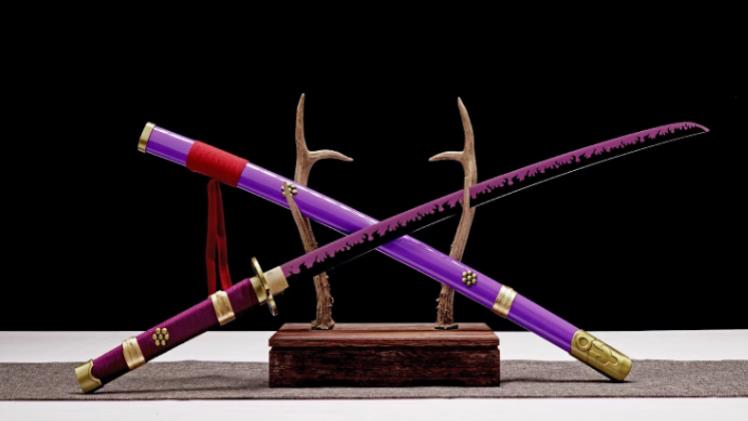The Katana Sword: The Perfect Blade or a Perfect Myth?

The katana sword holds a legendary status in history. With its iconic curved blade and reputation as the “soul of the samurai,” it has become a symbol of precision, artistry, and deadly effectiveness. For centuries, pop culture has portrayed the katana as the ultimate weapon, capable of slicing through almost anything with effortless grace. But was this Japanese sword truly the perfect blade, or is its reputation more myth than reality?
This article will examine the history, design, and practical use of the samurai sword. We will explore the arguments for its perfection while also considering its limitations. By comparing it with other historical swords and analyzing its role on the battlefield, we can gain a clearer understanding of the katana’s true place in the annals of weaponry. For collectors, martial artists, and history buffs, this is an exploration of a weapon that is as complex as it is beautiful.
A Sword Forged in History and Tradition
The story of the katana begins in feudal Japan. Its origins can be traced to the tachi, a longer, more curved sword worn by samurai on horseback. As warfare shifted from open-field cavalry charges to faster, close-quarters combat, the sword evolved. By the Muromachi period (1336–1573), the katana emerged. It was designed to be worn with the cutting edge facing up, allowing a warrior to draw and cut in a single, fluid motion—a technique that became a hallmark of samurai combat.
This Japanese sword was far more than a tool of war; it was considered the “soul of the samurai.” The bond was so profound that a warrior’s honor was intertwined with his blade. The creation of a samurai sword was a deeply spiritual and meticulous process, often taking months to complete. A master smith would begin with tamahagane, a precious steel smelted from iron sand, and repeatedly fold the metal to purify it. This folding process created thousands of layers, giving the blade its legendary resilience and distinctive grain pattern (hada).
A critical step was the differential heat treatment. The smith would coat the blade with a special clay mixture, applying a thicker layer on the spine and a thinner one along the edge. When heated and quenched, the edge cooled rapidly, becoming incredibly hard and sharp, while the spine cooled slowly, remaining softer and more flexible. This combination produced the iconic temper line (hamon) and gave the katana its unique ability to hold a razor-sharp edge while absorbing the shock of impact.
The Case for Perfection: A Masterclass in Design

For many enthusiasts, the katana represents the pinnacle of sword-making. Its design incorporates several features that make it a formidable weapon, especially in the hands of a skilled user.
Unmatched Sharpness and Cutting Power
The primary argument for the katana sale perfection is its incredible cutting ability. The combination of high-carbon steel and differential hardening allowed the edge to be sharpened to a degree few other swords could match. The blade’s gentle curve adds to its effectiveness, enabling a slicing motion rather than a simple chop. This allows the user to draw the blade through the target, maximizing the cutting surface and delivering devastating blows. Historical accounts and modern tests have shown that a well-made katana can cut through multiple bamboo poles, thick tatami mats, and even metal armor under the right conditions.
Balance and Agility
Despite its power, the katana sword is exceptionally well-balanced. Typically wielded with two hands on the long hilt (tsuka), it feels agile and responsive. This balance allows for rapid changes in direction and precise control, making it a versatile weapon for both offense and defense. A skilled samurai could execute complex techniques with a speed and fluidity that could overwhelm an opponent armed with a heavier, more cumbersome weapon.
The Art of the Draw: Iaijutsu
The katana’s design is optimized for iaijutsu, the art of drawing the sword and striking in one motion. Worn edge-up, the sword could be unsheathed and brought into a cutting arc with breathtaking speed. This gave the samurai a critical advantage at the start of an engagement, often allowing them to end a fight before it truly began. This tactical advantage is a key reason why the katana is often considered a perfect dueling weapon.
Counterarguments: The Flaws in the Steel
While the katana is an exceptional weapon, it is not without its flaws. To call it the “perfect sword” is to overlook its very specific design purpose and its limitations in broader combat scenarios.
A Fragile Edge
The very feature that makes the katana so sharp—its hardened edge—is also a source of weakness. This edge is brittle and prone to chipping or breaking if it strikes a hard object, such as another sword or thick plate armor. While the softer spine provides flexibility, a poorly executed block or a clash of steel-on-steel could permanently damage the blade. European longswords, by contrast, were often made of more uniformly tempered steel, making them more durable in sustained blade-to-blade combat.
High-Maintenance Weaponry
A samurai sword requires meticulous and regular maintenance. The high-carbon steel is susceptible to rust, and the blade must be carefully cleaned and oiled after every use to preserve its condition. The polishing process is a specialized art form in itself, requiring trained artisans to restore the blade’s geometry and finish. This level of care was practical for the samurai class, who revered their swords, but it makes the katana less practical as a low-maintenance battlefield weapon compared to other historical swords.
Specialized for a Specific Role
The katana was primarily designed as a cutting weapon for use against lightly armored or unarmored opponents. While it could be effective against some forms of traditional Japanese armor (yoroi), it was not designed to defeat European-style full plate armor. Its blade lacked the rigidity and sharp point needed for effective thrusting into the gaps of plate armor, a common technique in European swordsmanship. The Japanese sword was a master of the cut, but it was less versatile than swords designed for both cutting and thrusting.
How Does the Katana Compare to Other Swords?
When comparing katana swords to other historical blades, it becomes clear that “perfection” is relative to context.
- European Longsword: The longsword was a versatile cut-and-thrust weapon designed to be effective against a variety of armor types. It was generally more robust in blade-on-blade combat and offered more effective thrusting capabilities. However, it typically couldn’t match the sheer cutting power of a katanaagainst a soft target.
- Viking Sword: The Viking sword was a heavy, broad-bladed weapon designed for powerful chopping blows, often used in conjunction with a shield. It was built for durability in brutal, close-quarters fighting but lacked the finesse and balance of the katana.
- Rapier: The rapier was a specialized thrusting sword popular in Renaissance Europe for civilian dueling. It was lightning-fast and deadly in a one-on-one duel but was almost useless as a cutting weapon and impractical on a battlefield.
Each of these swords was “perfect” for its intended purpose and the combat environment in which it was used. The katana excelled in its role as the primary sidearm of the samurai, a dueling weapon optimized for unarmored combat.
The Enduring Legacy of the Samurai Sword
So, was the katana the perfect sword? The answer is both yes and no. In its specific context—as a symbol of status and a dueling weapon for the samurai—it was a masterfully designed tool that approached perfection. Its cutting power, balance, and artistic beauty are undeniable. A finely crafted blade, like a Makoto katana, represents the zenith of traditional Japanese smithing and is a testament to the skill of its maker.
However, in a broader sense, no single sword can be called “perfect.” The katana’s fragility and specialization are significant limitations. Its legendary status is as much a product of samurai culture and modern media as it is of its battlefield performance. The truth is that the katana is a specialized masterpiece, not an infallible super-weapon. Its legacy lies not in its mythical invincibility but in its embodiment of a warrior culture where art, spirit, and combat were forged into a single, iconic blade.





